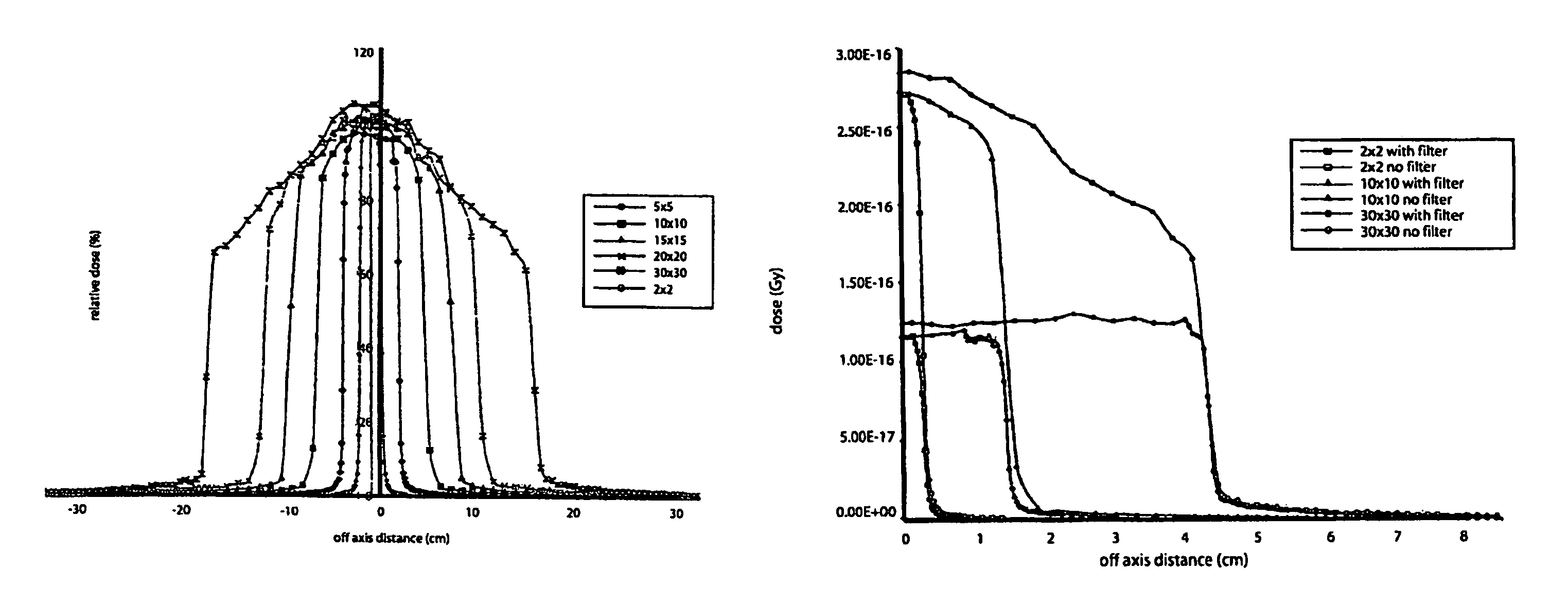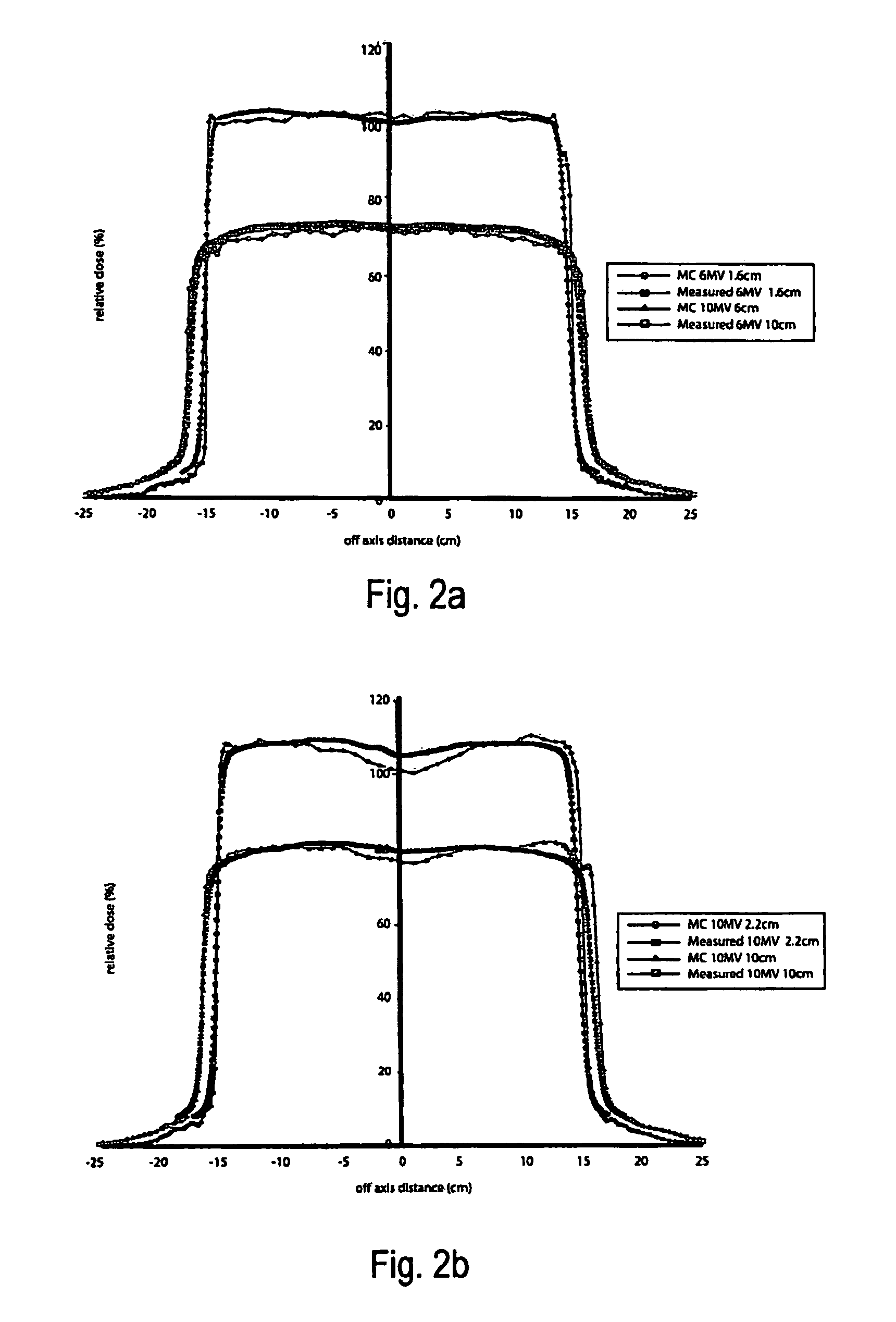Unfiltered radiation therapy
a radiation therapy and filter technology, applied in radiation therapy, radiation therapy, x-ray/gamma-ray/particle irradiation therapy, etc., can solve the problems of fluence attenuation and beam contamination, and achieve the effects of reducing beam efficiency, increasing scattered radiation, and reducing fluen
- Summary
- Abstract
- Description
- Claims
- Application Information
AI Technical Summary
Benefits of technology
Problems solved by technology
Method used
Image
Examples
Embodiment Construction
[0021]IMRT (Intensity Modulated Radiation Therapy) is rapidly becoming a common treatment modality with a recent study claiming that it is used by a third of the radiation oncologists in the United States. The modern treatment machines are designed with dynamic MLC and IMRT-ready systems integrated into them but many of the current linear accelerators still used today, have the MLC as an add-on. In either case the linear accelerator is designed such that IMRT treatments and standard treatments can be carried out on the same unit. The conventional 3D conformal therapy treatment requires a flat beam because generally dose compensation to achieve uniformity within target volume for each individual beam is not performed. However, in generating IMRT treatment plans, the planner ends up with a non-uniform density matrix to deliver the desired dose with the target volume, and spare the surrounding normal or critical structures. To achieve this goal, a flat beam is not required. Modulation ...
PUM
 Login to View More
Login to View More Abstract
Description
Claims
Application Information
 Login to View More
Login to View More - R&D
- Intellectual Property
- Life Sciences
- Materials
- Tech Scout
- Unparalleled Data Quality
- Higher Quality Content
- 60% Fewer Hallucinations
Browse by: Latest US Patents, China's latest patents, Technical Efficacy Thesaurus, Application Domain, Technology Topic, Popular Technical Reports.
© 2025 PatSnap. All rights reserved.Legal|Privacy policy|Modern Slavery Act Transparency Statement|Sitemap|About US| Contact US: help@patsnap.com



